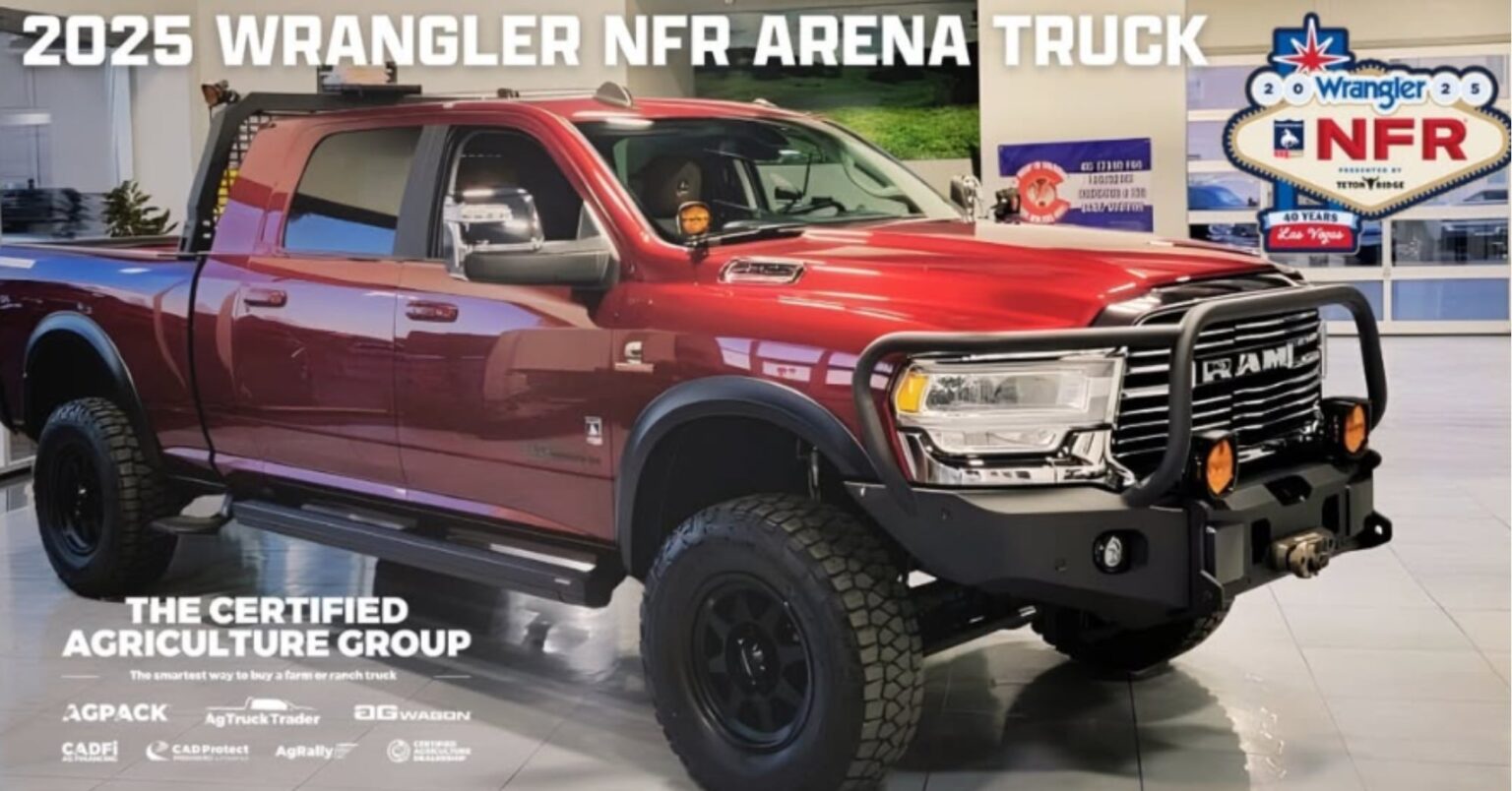Subscribe to Updates
Get the latest agriculture news and updates directly to your inbox.
Author: staff
AGwagon’s PRORODEO Special Edition is a heavy-duty truck package built to match the realities of ranch, farm, and rodeo life that include long days, rough ground, heavy loads, and the need to stay organized and connected wherever you end up. Created through a partnership with the PRCA, it takes the core AGwagon concept (a purpose-built agricultural truck) and adds rodeo-driven design details from top athletes, along with bold PRORODEO branding throughout the truck. “The AGwagon is the first purpose-built truck specifically designed to meet the rugged demands of agriculture and Rodeo,” says Pat Driscoll, founder and CEO of The Certified…
Just after 10:00 a.m. CT, March corn was down 5¾¢ at $4.44¼ per bushel. January soybeans were down 3¢ at $11.21¾ per bushel. “Futures are again mixed with little clear direction being seen,” said Karl Setzer, partner with Consus Ag Consulting. “Fresh news remains light and this is contributing to the lethargic market action. Our next big influx of data will be next week’s WASDE update, but typically the December report is a quiet one. Month, quarter, and year-end will start to become primary factors in price discovery. Two main points of interest right now are the weather conditions in…
Biological crop protection products are sometimes seen as a potential step for production systems, but experts say the biggest hurdle has been reliability. Growers facing tight spray windows, high disease pressure, and rising input costs need tools that perform consistently across regions, seasons, and application methods. That context is central to Biotalys’ latest milestone: the agtech company announced that the U.S. Environmental Protection Agency has issued final approval for its first biofungicide, EVOCA, a protein-based, precision biocontrol product designed to manage destructive fungal diseases in grapes, strawberries, and hemp. EVOCA is the first product developed using Biotalys’ proprietary AGROBODY technology…
AGDAILY Staff · December 3, 2025 On Giving Tuesday, Carhartt teamed up with Metallica’s All Within My Hands Foundation to support families facing hunger across the country. Together, the partners are making a combined $500,000 gift to Feeding America, helping provide 5 million meals nationwide and reinforcing a shared commitment to step up for communities when it matters most. In addition to the donation, Carhartt released a new short film, “Gatherings,” in honor of the farmers and ranchers whose work keeps America’s holiday traditions going. Part of the brand’s “Making the Holidays Possible” campaign, the film is a reminder that…
1. Corn Futures Lower, Soybeans Higher Overnight Corn futures declined, soybeans were modestly higher and wheat was little changed overnight as traders keep an eye on geopolitical events and export data. Russian President Vladimir Putin threatened to cut off Ukraine from the Black Sea after two Ukrainian naval drones hit tankers headed to Russian ports. That may influence shipments of agricultural products including corn and wheat leaving several ports in Ukraine including the facility in Odesa. Wheat futures were underpinned overnight on the news, though increased production in Australia may be keeping a lid on prices. Australian wheat production will…
The story of the little-known Avery Company is a near-miss tale of a firm that did everything right but at the wrong time. Avery falls into that category of a very promising endeavor that could have become a major power in farm machinery. Instead, it hit economic roadblocks that, in time, brought it down. In its day, Avery was a firm to be reckoned with. The company’s line was extensive, featuring not only steam traction engines, tractors, and farm implements (its threshers were considered some of the best built at the time) but also road-building and construction vehicles, as well…
Idaho state and local health officials are investigating a spike in illnesses reported after raw milk consumption, according to the Idaho Department of Health and Welfare. Since Aug. 1, 2025, at least 23 cases of Campylobacter, including six children younger than 12, have been reported in Idaho among people who said they drank raw milk before becoming ill. The state DHW also reported three cases of Shiga toxin-producing E. coli, an infection that can cause especially serious complications in young children. Cases have been reported across the state, with multiple people seeking medical care and two requiring hospitalization after consuming…
By Ryan Hanrahan Bloomberg’s Michael Hirtzer and Matthew Griffin reported that “Deere & Co.’s weak forecast for the year ahead reinforces the difficulty in predicting a recovery in the U.S. farm economy as uncertainty continues to swirl over the impact of tariffs and trade deals.” “Shares of the world’s biggest farm machinery maker fell as much as 5.7% in New York as the company’s first profit outlook for 2026 fell short of expectations. The forecast underscores how the agriculture sector remains in the dark even after a U.S. trade agreement resumes crop shipments to China,” Hirtzer and Griffin reported. “Farmers have…
Dr. Temple Grandin has had a milestone month celebrating both her legacy and the next generation of agricultural leaders. Grandin made a recent unannounced visit to 4-H’s Clover Capital, meeting with National 4-H Council Associates to discuss the future of food and farming, where Grandin spoke about the need for experiential learning in agriculture. “Her groundbreaking designs transformed livestock handling and reshaped modern agriculture,” AmyJo Hasselquist, account manager with Food, Ag + Nutrition, wrote in an email to AGDAILY. Grandin emphasized how experiential education can open doors for youth who may not see themselves in agriculture yet. She is a…
By Cami Koons The Iowa Department of Agriculture and Land Stewardship announced Monday that applications were open to farmers, small businesses and nonprofits for cost-share grants to improve processing, equipment, facilities, training, food safety, continuing education and more. Iowa producers of locally made and raised products are eligible for up to $25,000 in matching funds, per project, from the state as part of the Choose Iowa program. Choose Iowa is a network of more than 300 farmers, businesses and nonprofit organizations selling Iowa-made goods. The program is sponsored and marketed by the state. In April, IDALS awarded 33 value-added grants to producers. The grant…








:max_bytes(150000):strip_icc()/Markets-6-Corn-down-13-6079dfe0945d457f88c0730ef35a6f38.jpeg)


:max_bytes(150000):strip_icc()/Updated3BigThings-5-Corn-darkblue-1-3c79c171065a4bd999403ee830ec17ec.png)
:max_bytes(150000):strip_icc()/AveryModel45-65tractor-9a31243f9ded4c40b7b9065c8e828380.jpg)

:max_bytes(150000):strip_icc()/JohnDeereModelBwithrowcultivator_preview-2edb5a74ca61451f906d8c096b21ff8b.jpg)

:max_bytes(150000):strip_icc()/50535654277_a0bc4ce687_k-3812913f20014df398a4dcc53ac09056.jpg)